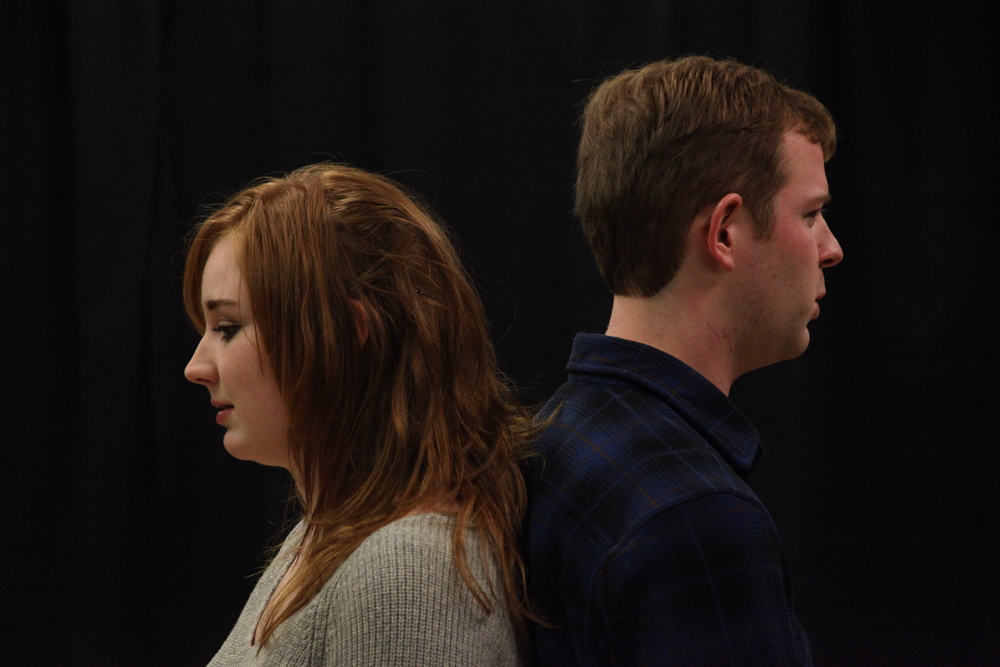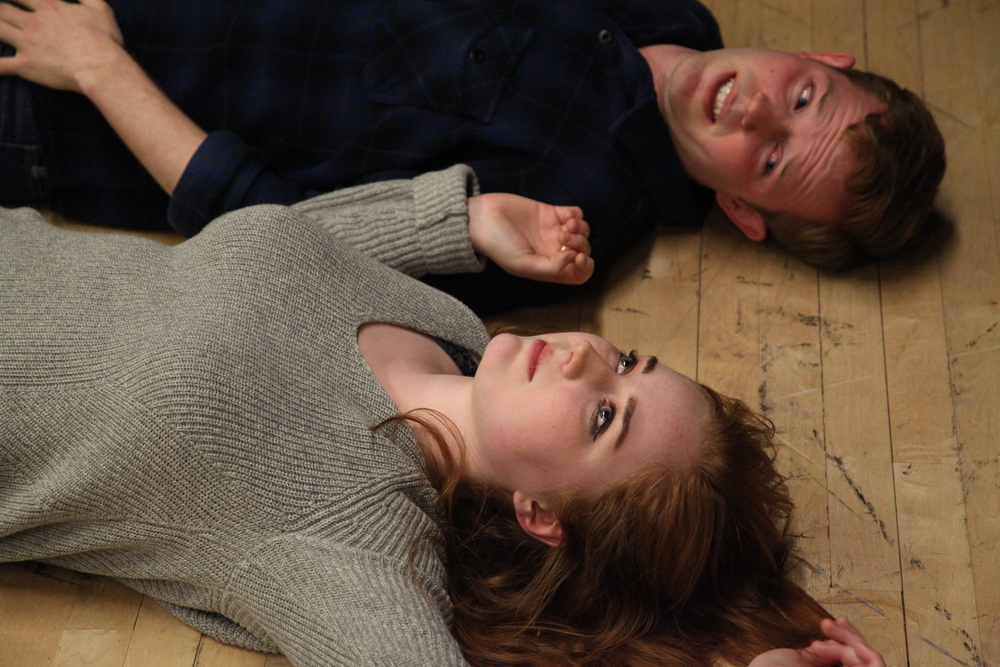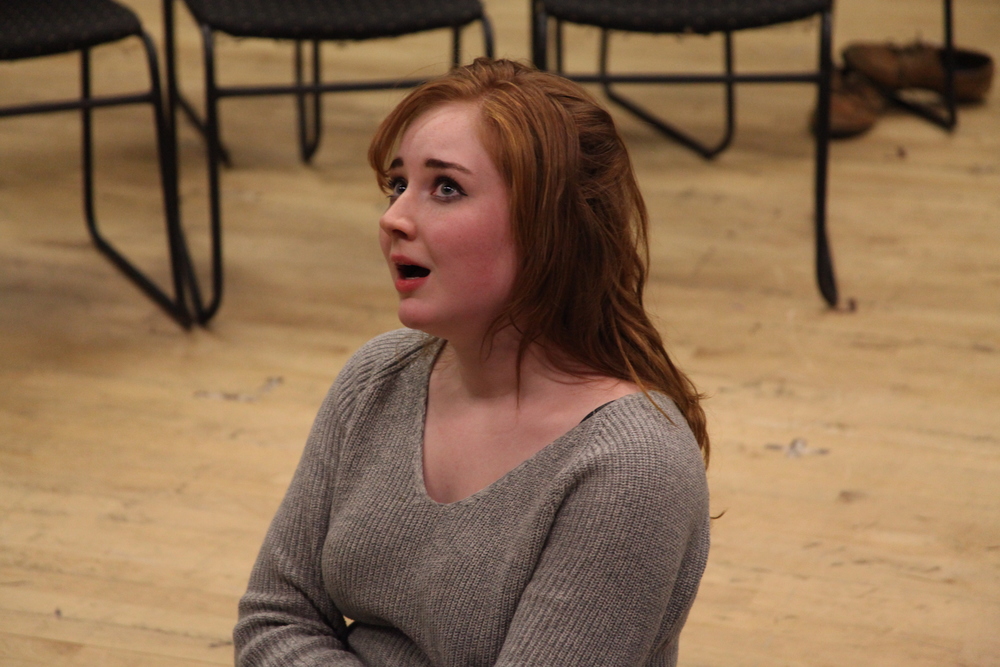
Lily Donahue ’15 and John Noble Barrack ’15
Are We Good People?
By: Julia Friedland
Lungs opened strikingly with stark florescent lighting, silence, and two characters—M (John Noble Barrack ’15) and W (Lily Donahue ’15)—standing just outside the audience, who were seated in-the-round. We heard W say in disbelief “A baby?” and then M reassure her: “Breathe.” With that, the thrilling, ferociously honest ride began, and we as the audience were included as a seminal part of it—as there was no protective barrier between M and W’s world and our own. As the couple embarked on their journey together circling between and behind the audience, Studio A transformed into a barren space where nothing could hide. But with such genuine acting and directing, nothing had to.
Directed by Emily Moler ’15 and stage managed by Greer Duckworth ’15, Duncan MacMillan’s Lungs follows the relationship of an anonymous couple designated as M and W, as they struggle to find meaning in bringing a baby, and with that a new life, into the world. The play is one ongoing dialogue, where time is abstract but constantly referenced. We watch M and W toiling among their utter devotion to each other, their desperation for resolution and validation, and their yearning for comfort. We watch them struggle to justify the notion of bringing a new life into a world with dwindling environmental resources. We watch them do it all in-the-round, where they can be seen from every angle. Barrack reinforced the intimate nature of the playing space, saying, “Lily and I are so physically close to the audience that there is no room for lying. I can’t fake any moment. Everything is picked up by the audience and nothing can be lost or thrown away.”

Lily Donahue ’15 and John Noble Barrack ’15
M and W begin happily in love, engaging in routine gestures, creating patterned moments of visual normalcy. However, as tragedy and betrayal envelopes them, their relationship begins to fall apart. There’s a moment amidst the sadness and separation in which W sits in a ball in the center of the circle, almost a fetus, as M circles the outside of the space, establishing for the first time a stark separation—a disconnect between them. Moler beautifully directed these physical, visual manifestations of closeness and separation, in which the audience is forced to shift their focus, also engaging in the tension. On the emotional phases between M and W, Donahue says, “It’s really easy to get caught up in the ‘sections’ of the play—the beginning’s happy, the ending’s sad! We wanted to really get the peaks and valleys of the play, and not just make things screaming matches, which it can be easy to do, especially towards the end.”
Though the production was beautifully and gracefully executed, MacMillan’s text did not come without its own set of difficulties for the actors and director. “The most daunting aspect of this show from a directing standpoint is how to tell this story in an empty space with only two bodies,” says Moler. “The playwright specifies that there should be no mime, lights, sound, scenic elements, or special costumes. So telling this story without any of those tools was the biggest challenge. But these challenges and limitations really inspired me to find creative solutions.”

Lily Donahue ’15
In the production’s final moment, W sits on her knees near the spot where she made her first entrance only an hour before, though it feels as if we have been with her for a life-time, too invested to say goodbye so soon. And, as she does, she looks down at the grave of M, and utters her final words: “I love you.” Suddenly reality hits, the lights go out, and we’re back in Studio A. However, no light chatter has resumed. The room has been transformed—too affected by the profound nature of the work.
When I asked Donahue what surprised her most about the show, she said, “I’ve never, ever been in a play where people actually gasp at lines. Everyone’s had conversations like some of the ones in this play, so I feel like people can actually identify with these characters.” And we did, because we can all see the M and W that live within us.

Lily Donahue ’15 and John Noble Barrack ’15
This article originally appeared in print in the Fall 2014 Skidmore Theater Newsletter.
